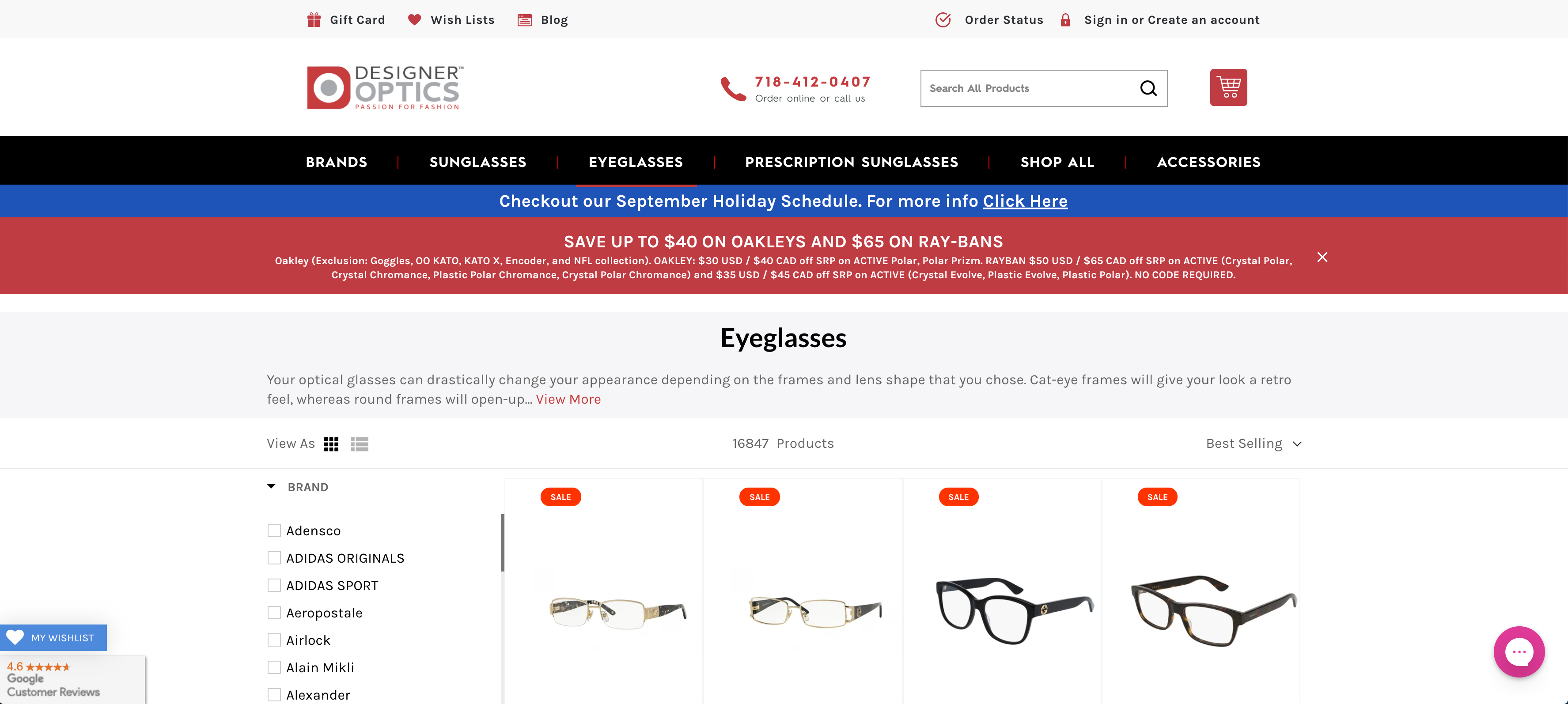Glasses are a fashion statement. Whether it is for everyday use, reading or sunbathing, billions of people around the world wear some form of glasses. Therefore, entrepreneurs looking for products for sale on the Internet would think twice about the business of glasses. So how do you get started with eyewear? Let’s go through some of the steps you need to take.
Contents
Step 1: Market Research

As with most startup companies, the first place you need to start is in-depth market research. Which competitors already exist? What does each of them do best? What are they not doing well? How can you do it differently, or better?
If you don’t have a bunch of money to invest in marketing and branding, you’ll need to find your own niche to succeed. If today’s online marketplace has a terrible UX, maybe you could fix that. If no one is focusing on specific market segments, you may be in it. Whatever it is, the key here is to understand how you will be able to stand out from everyone else in the market. Find the gaps (s) and then figure out how to fill them with your product.
Step 2: Validate & Source Product

Once you figure out who you’re going to serve, you’ll need to figure out where to get the product they want and need. In this process, you must also validate the business model. For example, if you find that a niche with insufficient service is cheap for the eyes, you need to make sure you procure a product to meet customer expectations at a “cheap” price while maintaining reasonable profit margins. If the numbers don’t pull, then you need to start with step 1, until you get a really scalable and profitable business.
Step 3: Setup Your Business

Once you understand the business model and feel good about the opportunity to make a profit, then you need to set up your business. This will include things like setting up your corporate entity, getting a bank account for your company, getting a business license, and so on. Etc. If you have never run a business before, it is advisable to consult an expert to make sure you cover all of your base and are ready to do business legally in any jurisdiction in which you are located.
Step 4: Branding

Although some people ignore this step, if you intend to build an internet power plant type business, you will need to use your brand. Your brand should talk about the market you are trying to serve, so be sure to think about it. If you are going to be a luxury goods retailer, then your brand should exude luxury to everyone who sees it. If catering is for women, then the brand should talk to women, etc. Make sure your brand shows exactly what your company is doing.
Step 5: Create A Website

Once you’re done with that killer branding, the next step is to put it in the form of a website. Your website is where all the action will take place, so it has to be good. You want the brand to be worn everywhere and you need to make sure it is easy to use for your customers. The last thing you want is a website that is difficult to use and hinders your customers from buying your products. Keep it simple & amp; be sure to consider the user experience. In addition, be sure to think about who your clients are (which is a common topic you should always reference in any business). If you are targeting older people, make sure your website is easy for older people to use. That means things like larger text and not assuming they will know what popular web icons mean. The goal is to sell your product, so make it as easy as possible.
When designing your website, it is also advisable to engage in the services of a professional CRO (conversion rate optimization expert) as well as SEO (search engine optimization expert). CRO will help ensure that your website is optimized in a way that helps drive conversions or sales. SEO will make sure the site is optimized for search engine rankings.
As a practical example, consider that a user searches Google to buy glasses online. SEO will help keep your website in one of the leading positions that are emerging. Once a user clicks on a Google listing, CRO takes responsibility – their job is to get that user to buy something. They will help optimize UX and will help create things like promotions that will grab users ’attention and lead them to interact. Here is an example below that illustrates such a promotion. In this example, they show the special event “September Holidays”. They also promote special sales around Oakleys and Ray-Ban. These are calls for calls that users want to click, join & amp; to buy.
It is vital that you include these people as early as possible, otherwise you risk having to repeat a bunch of jobs if done wrong to begin with.
Step 6: Marketing
Once your website is all set up and optimized, the next step is to tell people about it. As you might expect, this is an important step. You could have the best website in the world, but if no one knows about it, you won’t make money – you have to say a word.
For most startups, cash is a valuable commodity, so they don’t have a bunch of extra money for big paid media campaigns. If you have cash, the increase will be much easier. You can display ads on Instagram, Facebook, Tik Tok, Google, etc. Or even pay influencers to promote your product. There are many options if you have cash.
Now, if you don’t have a bunch of money, which most startups do, you’ll need to be smarter & amp; works more. You will need to nurture relationships with influencers and convince them to mention your product. You will need to run PR campaigns to get a voice about your brand. You will have to do everything you can to get a vote. There is no sugar, but it will be hard work – there is a reason why most businesses fail. If you are going to be an exception, you will have to work harder and smarter than everyone else.
Step 7: Customer Service
When you start bringing in customers, you need to make sure you make them happy. Happy customers will tell their friends about your business, and they will come back again and buy more products. Unhappy customers will tell people why they shouldn’t buy from you, and will generally cause a variety of problems. Realizing that gaining customers in the first place is hard enough, it’s much easier to focus on how to keep them happy.
In the end, it’s not that hard to figure out how to satisfy customers – treat them with respect and how you want them to treat you. Answer their questions and concerns immediately, be proactive in communication – try to consistently exceed their expectations.
While this list here won’t cover every little part about starting your online eyewear business, it should give you a pretty good idea of what you’re buying. Finally, whether you are starting this business or some other business, the general process here will continue for almost every online business. There are an infinite number of possibilities that people have yet to take advantage of – wishing you all the best in finding the perfect one for you.
